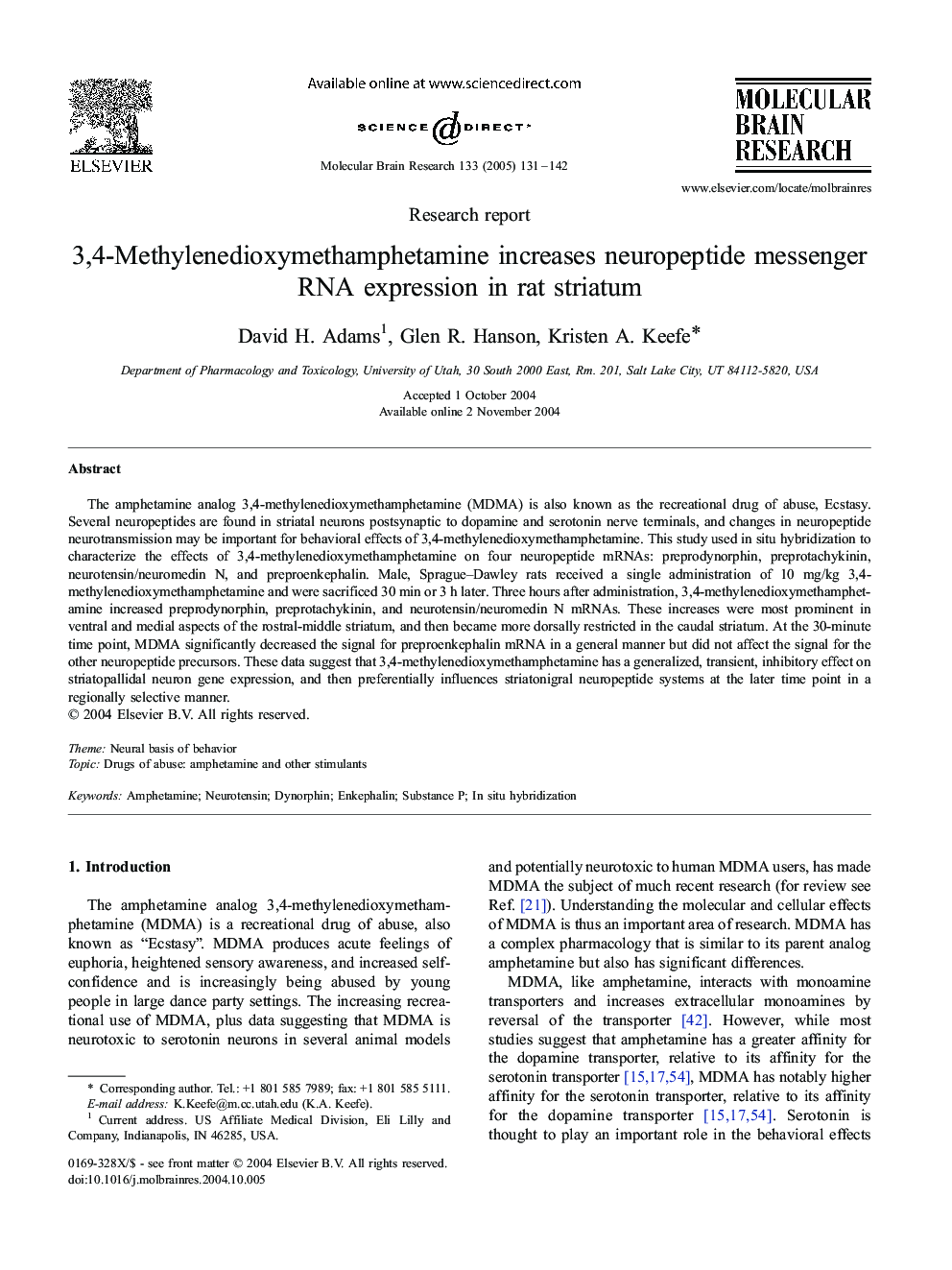| Article ID | Journal | Published Year | Pages | File Type |
|---|---|---|---|---|
| 9410857 | Molecular Brain Research | 2005 | 12 Pages |
Abstract
The amphetamine analog 3,4-methylenedioxymethamphetamine (MDMA) is also known as the recreational drug of abuse, Ecstasy. Several neuropeptides are found in striatal neurons postsynaptic to dopamine and serotonin nerve terminals, and changes in neuropeptide neurotransmission may be important for behavioral effects of 3,4-methylenedioxymethamphetamine. This study used in situ hybridization to characterize the effects of 3,4-methylenedioxymethamphetamine on four neuropeptide mRNAs: preprodynorphin, preprotachykinin, neurotensin/neuromedin N, and preproenkephalin. Male, Sprague-Dawley rats received a single administration of 10 mg/kg 3,4-methylenedioxymethamphetamine and were sacrificed 30 min or 3 h later. Three hours after administration, 3,4-methylenedioxymethamphetamine increased preprodynorphin, preprotachykinin, and neurotensin/neuromedin N mRNAs. These increases were most prominent in ventral and medial aspects of the rostral-middle striatum, and then became more dorsally restricted in the caudal striatum. At the 30-minute time point, MDMA significantly decreased the signal for preproenkephalin mRNA in a general manner but did not affect the signal for the other neuropeptide precursors. These data suggest that 3,4-methylenedioxymethamphetamine has a generalized, transient, inhibitory effect on striatopallidal neuron gene expression, and then preferentially influences striatonigral neuropeptide systems at the later time point in a regionally selective manner.
Keywords
Related Topics
Life Sciences
Neuroscience
Cellular and Molecular Neuroscience
Authors
David H. Adams, Glen R. Hanson, Kristen A. Keefe,
